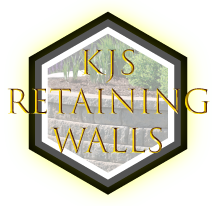Get a free quote
Contact Us
KJ’s Retaining Walls provides wood retaining walls for the people of Pomona, California. We specialize in wood retaining walls for residential and commercial use. Wood retaining walls are an attractive way to create level areas on your property that can be used for driveways, gardens, patios, children’s play areas or decks. Retaining walls also keep soil and vegetation away from established structures which means they’re great for people who live near the coast or flood zones!
Advantage of a Retaining Wall
A great advantage of wooden retaining walls is that you do not need to use tie-backs, unlike a four-by-four timber retaining wall. Nor does it rely on weight and tilt to hold back the slope as does a masonry wall.
Instead of digging large tie-backs into the slope, most low wood retaining walls are made with posts that are dug in the ground just like a fence. The boards that make up the wall act as struts and hold in place. The wall and the soil behind it must remain low – any height over 24-30 inches, for example, will result in too much pressure against the back of the wall. The weight from this could cause it to bend and eventually fall under its own weight.
Retaining walls provide natural beauty while also providing structure and stability to a project. A popular choice for landscaping, they are more affordable than masonry or concrete retaining walls.
Are wood retaining walls good?
Retaining walls provide stability and structure for your garden. There are a variety of materials available, and wood is one option that provides natural beauty at a low price point in contrast to more expensive masonry or concrete options.
How long do wood retaining walls last?
How long do retaining walls last? Timber is able to span 40 years, but the life duration of a masonry or concrete wall is not limited.
What kind of wood should I use for a retaining wall?
The best kind of lumber for these low walls is Douglas fir which has been pressure treated and rated for contact with the ground. For high retaining walls, there are expensive options such as wooden planks but railroad ties can be a good alternative.
Water and Moisture Drainage
The contractor must address wet spots and drainage when building a timber retaining wall in order to lengthen its lifespan. The water that can be gathered at the top, as well as seeping between boards at the bottom, speeds decomposition of your board-based slope protection. Specific attention needs to be paid to grades both on top and beneath the wood structure
When installing timber retaining walls, waterproof sheeting is often applied to the back of them for better separation between it and surrounding fill. Gravel packing is also required behind these types of walls near the bottom due to the accumulation of water during rainfall. The gravel extends the length of the wall and may also contain perforated tubing to create a French drain that shunts water to one or both ends of the wall. This prevents water from collecting near its base, which decreases the risk of mold and rot. Some walls might include weep holes at the bottom of their face, but these keep the wood wet, which encourages rot, and it is not recommended for use in wood retaining walls.
